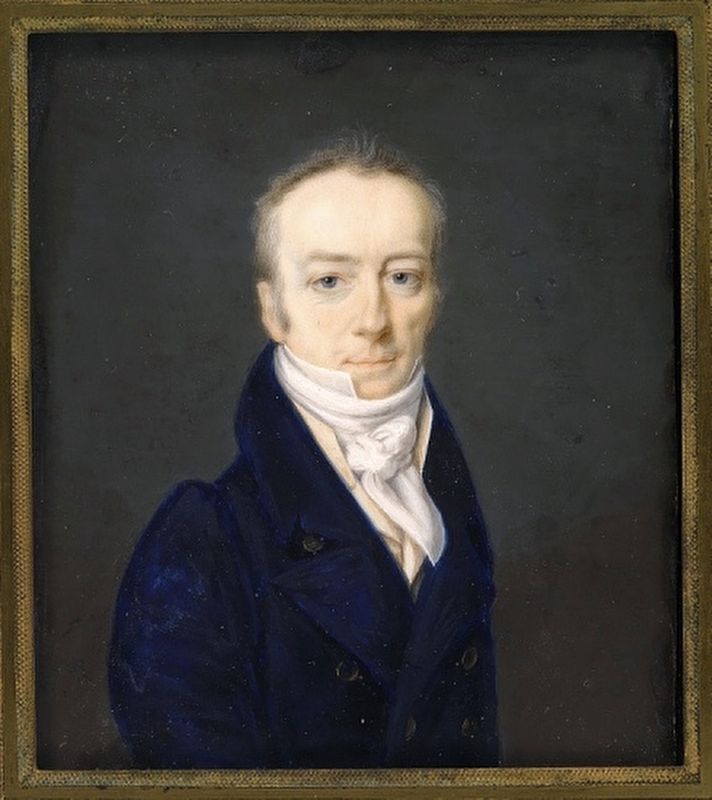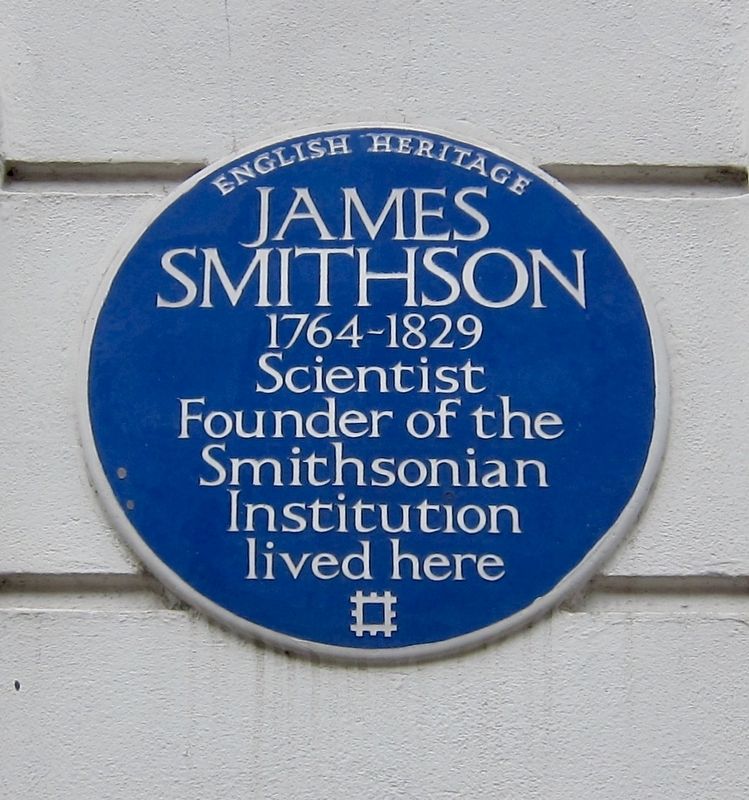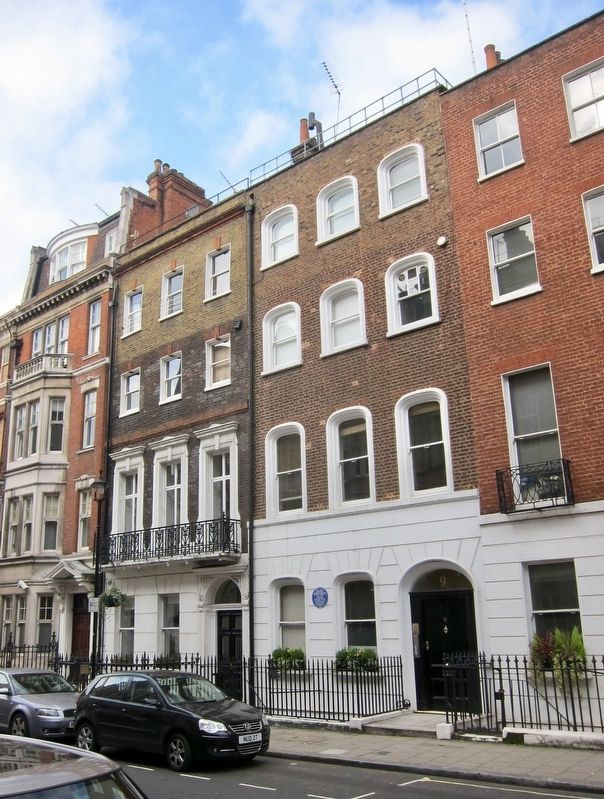City of Westminster in Greater London, England, United Kingdom — Northwestern Europe (the British Isles)
James Smithson
1764 - 1829
Scientist
Founder of the
Smithsonian
Institution
lived here
Erected 2008 by English Heritage.
Topics. This historical marker is listed in these topic lists: Charity & Public Work • Science & Medicine.
Location. 51° 31.03′ N, 0° 9.02′ W. Marker is in City of Westminster, England, in Greater London. Marker is on Betinck Street, 0 kilometers west of Welbeck Street, on the right when traveling west. Touch for map. Marker is at or near this postal address: 9 Betinck Street, City of Westminster, England W1U 2EJ, United Kingdom. Touch for directions.
Other nearby markers. At least 8 other markers are within walking distance of this marker. Edward Gibbon (a few steps from this marker); Sir James MacKenzie (a few steps from this marker); Sir F. Paolo Tosti (within shouting distance of this marker); Sir Patrick Manson (within shouting distance of this marker); Thomas Young (about 90 meters away, measured in a direct line); Hector Berlioz (about 120 meters away); Sir Julius Benedict (about 120 meters away); Stephen Pearce (about 120 meters away). Touch for a list and map of all markers in City of Westminster.
Also see . . . James Smithson: Founder of the Smithsonian Institution (Smithsonian). James Smithson (c. 1765-1829), founding donor of the Smithsonian Institution, was born in 1765 in France with the name James Lewis Macie. The illegitimate son of Elizabeth Hungerford Keate Macie and Hugh Smithson, 1st Duke of Northumberland, he changed his name as well as his citizenship, becoming a naturalized British citizen around the age of ten. After his parents' death, he became known as James Smithson rather than James Macie. On May 7, 1782, he enrolled in Pembroke College, Oxford, and graduated four years later. The natural sciences sparked his interest, and he established a solid reputation as a chemist and mineralogist, during the exciting period when chemistry was being developed as a new science in the late 1700s. Committed to discovering the basic elements, he worked diligently to collect mineral and ore samples from European countries. Excerpts from his notes show that his field excursions often forced him to brave the elements and do without the upper class comforts known to his parents. Smithson, although a wealthy man, was determined to make a name for himself among scientists. He kept accurate records of his experiments and collections, and his publications earned the respect of his peers. The Royal Society of London recognized his scientific abilities and accepted his membership on April 26, 1787, only a year after he graduated from college, an unusual honor for someone so young. The society became an outlet for publishing many of his papers, which covered a wide range of scientific topics, and also was a meeting place for Smithson and other scientists. (Submitted on December 4, 2017.)

Photographed By Henri-Joseph Johns, 1816
3. James Smithson (Courtesy of the National Portrait Gallery)
Englishman James Smithson commissioned this forthright portrait from a Belgian artist working in present-day Aachen, possibly as a gift for a family member. Always painfully aware of his uncertain status as an illegitimate child of the Duke of Northumberland, he focused on his scientific publishing in chemistry and mineralogy. In 1826 he penned his most unusual will, providing for the establishment of the “Smithsonian Institution, an Establishment for the increase & diffusion of knowledge among men.” - National Portrait Gallery
Credits. This page was last revised on January 27, 2022. It was originally submitted on December 4, 2017, by Andrew Ruppenstein of Lamorinda, California. This page has been viewed 179 times since then and 14 times this year. Photos: 1, 2, 3. submitted on December 4, 2017, by Andrew Ruppenstein of Lamorinda, California.

